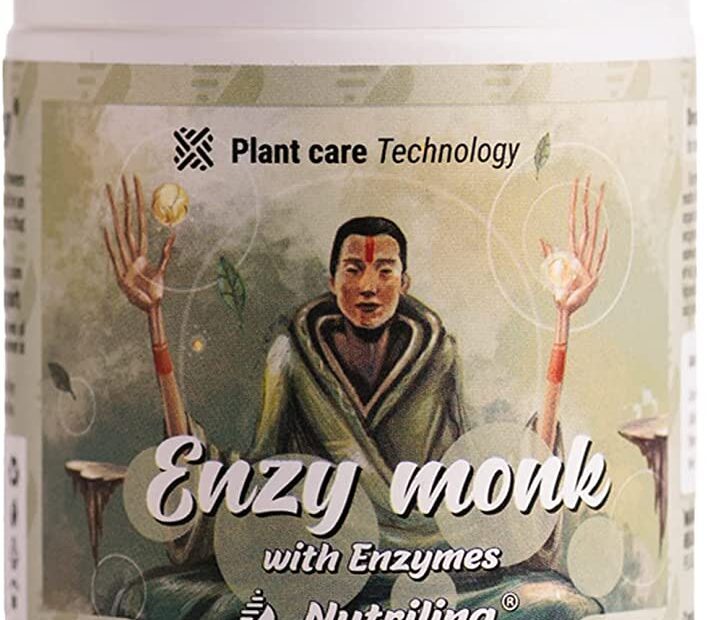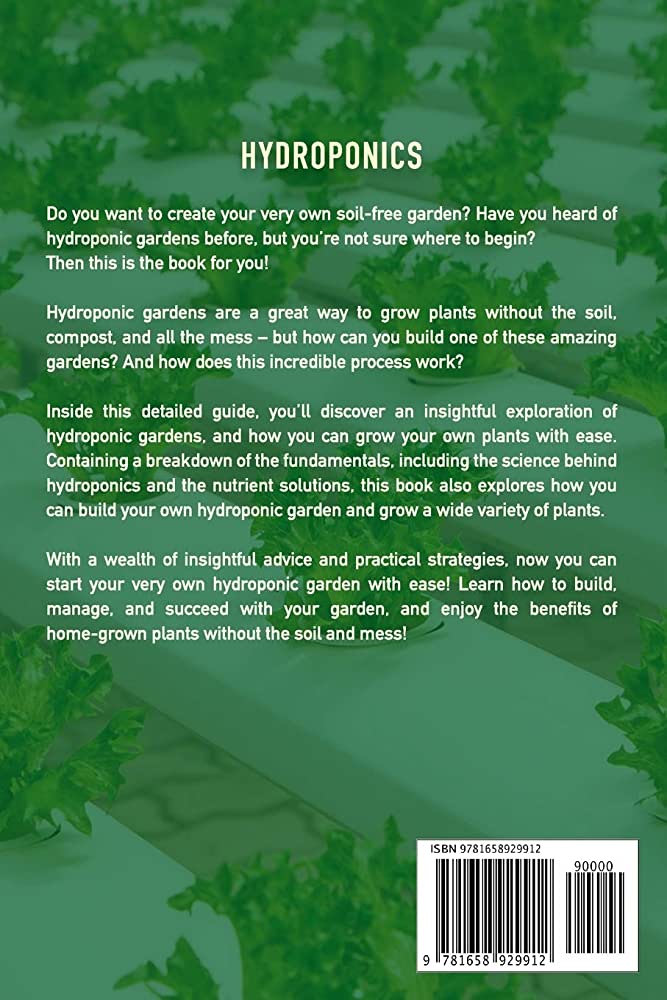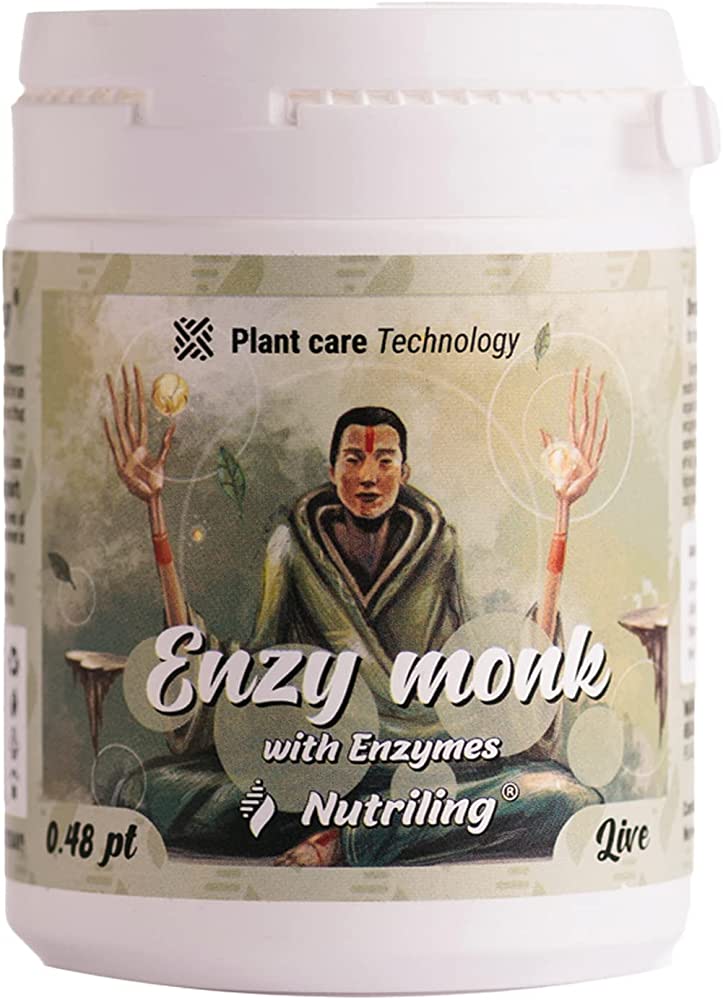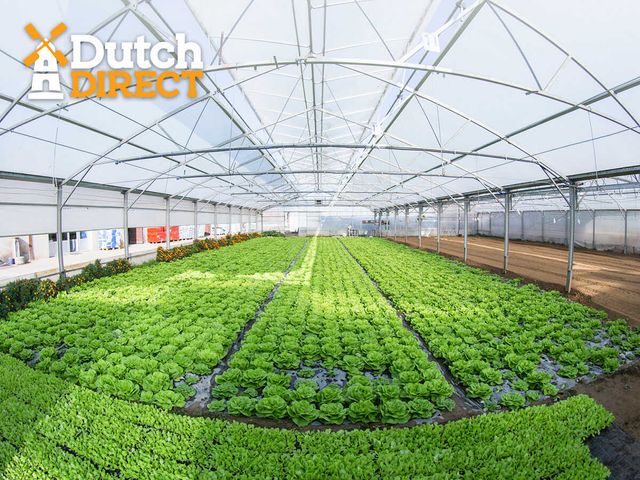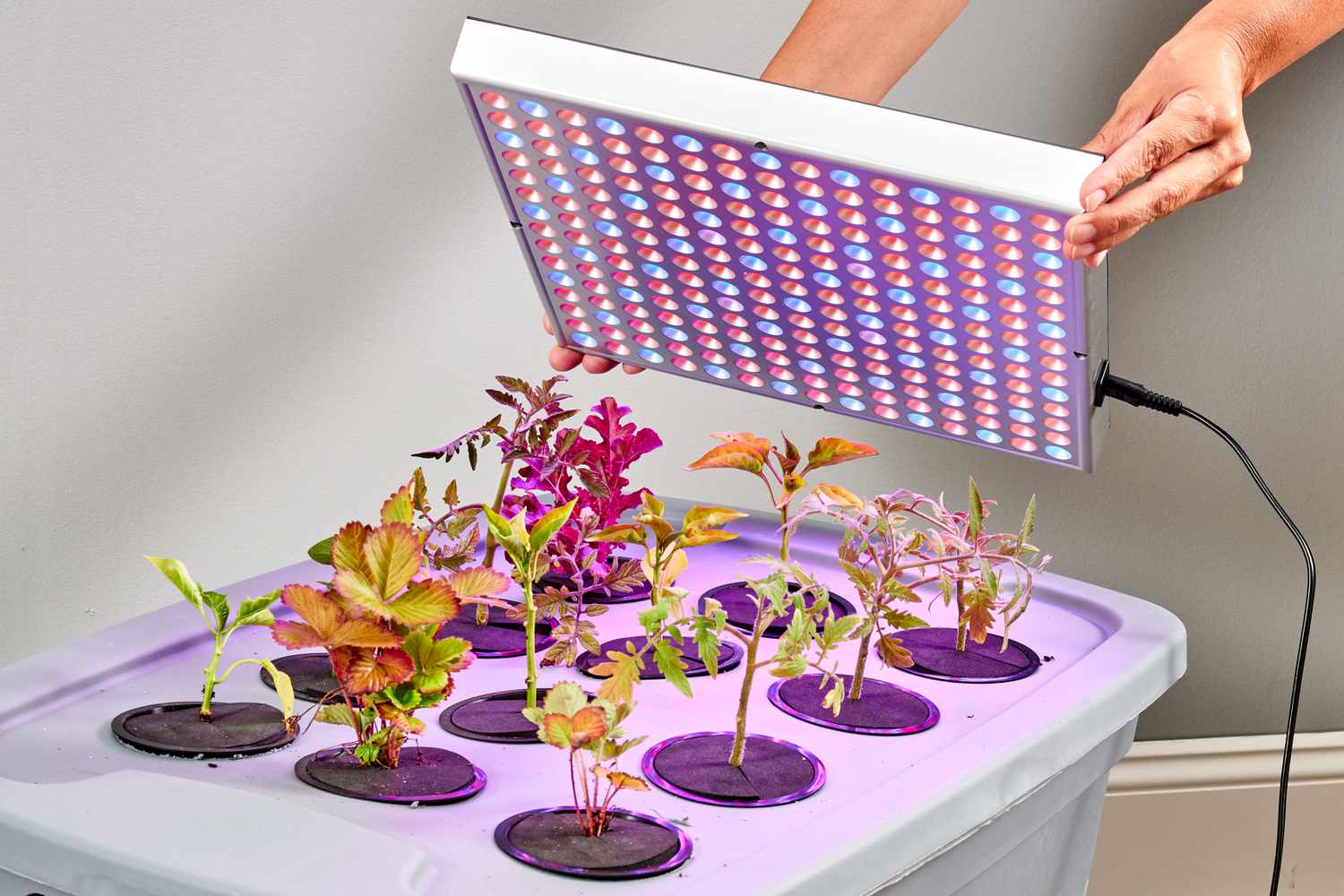Nutrient film technique (nft) nutrient solutions are used in hydroponic systems to provide plants with essential nutrients. Nft systems use a thin film of nutrient solution that flows over the plant roots, allowing them to absorb the necessary nutrients directly.
Hydroponics is a modern and highly productive way of growing plants, where no soil is used at all. Instead of soil, plants are grown in a water-based solution that is rich in nutrients. Nutrient film technique (nft) is one of the most popular hydroponic systems used worldwide.
In nft systems, a thin film of nutrient solution runs over the roots of the plants, allowing them to absorb necessary nutrients to grow and flourish. This technique provides superior growth rates, yields, and crop quality compared to traditional soil-based methods. The nft nutrient solutions must be carefully balanced to ensure optimal plant growth and development, resulting in nutrient-rich and healthy produce.

Credit: caliponics.co.uk
Introduction: Understanding Nft Nutrient Solutions
Nutrient Film Technique (Nft) Nutrient Solutions
Nft is a hydroponic system that uses a thin film of nutrient solution to grow plants in a controlled environment. The roots of the plants are suspended in the nutrient solution, allowing them to absorb the necessary nutrients to promote their growth and development.
The nutrient solution is circulated continuously, ensuring that the plants receive a constant supply of nutrients.
What Are Nft Nutrient Solutions?
Nft nutrient solutions are the essential components of the nft hydroponic system. They provide a balanced and readily available source of nutrients to the plants. Nft nutrient solutions typically include macronutrients such as nitrogen, phosphorus, and potassium, as well as micronutrients such as iron, magnesium, and calcium.
Nft nutrient solutions are available in a range of formulas to suit the requirements of different plants at different stages of growth. These formulas may also be adjusted to optimize the ph of the solution to ensure maximum nutrient uptake by the plants.
How Do They Work?
Nft nutrient solutions work by providing the plants with the necessary nutrients to promote their growth and development. The thin film of nutrient solution allows the roots of the plants to take up the required nutrients, encouraging them to grow and thrive.
The nutrient solutions also help to maintain the ph level of the system, ensuring that the plants can absorb the necessary nutrients effectively. They also provide an additional source of oxygen to the roots, promoting healthy growth.
What Are The Benefits Of Using Them For Plant Growth And Development?
Nft nutrient solutions offer a range of benefits for plant growth and development. Some of the key benefits of using nft nutrient solutions include:
- Consistent supply of nutrients to the plants
- Improved nutrient uptake by the plants
- Increased plant growth and yields
- Greater control over plant nutrition
- Reduced risk of pests and diseases
Nft nutrient solutions are also an eco-friendly alternative to traditional soil-based growing methods, as they require less water and fertilizer. Additionally, they allow for greater flexibility in plant spacing and offer the potential for year-round growing.
Nft nutrient solutions are an essential component of the nft hydroponic system, providing plants with a consistent supply of nutrients to promote their growth and development. With their many benefits, they offer a sustainable and efficient alternative to traditional soil-based growing methods.
How To Create Nft Nutrient Solutions
Nutrient film technique (nft) is a hydroponic system used to grow plants by providing a thin film of nutrient solution to the roots. Nft is an efficient method of farming that provides high yields while conserving water. Nft growers must ensure that they use the right nutrient composition to promote healthy plant growth.
Let’s dive deep into how to create nft nutrient solutions.
Ingredients Required
Creating an nft nutrient solution requires the following ingredients:
- Water – the water used must be free of salt and other impurities to avoid contaminating the nutrient solution.
- Nutrient solution – the nutrient solution must contain the right balance of macronutrients like nitrogen, phosphorus, and potassium, as well as micronutrients like iron, calcium, and zinc.
- Ph adjuster – the ph adjuster will ensure that the nutrient solution maintains the correct ph level.
Mixing Instructions
Follow these steps to mix nutrient solutions for nft:
- Fill a reservoir with water up to the desired level.
- Pour the nutrient solution into the reservoir, taking care to mix it thoroughly with the water.
- Use a ph meter or ph test kit to determine the ph level of the nutrient solution. Adjust the ph using ph adjusters like nitric acid or potassium hydroxide.
- Check the electrical conductivity (ec) of the nutrient solution using a conductivity meter. An ideal ec range is 1.2-2.0 ms/cm. If the ec is too low, add more nutrient solution. If it is too high, add more water.
- Run the nutrient solution through the nft channels for a few minutes to ensure that the solution circulates throughout the system.
Best Practices For Nutrient Solution Preparation
- Always use high-quality water to avoid contaminating the nutrient solution.
- Mix the nutrient solution thoroughly to ensure that all nutrients are evenly distributed.
- Monitor the ph and ec levels of the nutrient solution regularly.
- Adjust the nutrient solution regularly to maintain the correct ph and ec levels.
- Always keep the nutrient solution well aerated.
- Change the nutrient solution regularly to prevent the buildup of salts and other impurities.
Creating a nutrient solution for nft involves a careful balance of nutrients, ph levels, and ec levels. By following the mixing instructions and best practices, you can create a nutrient solution that promotes healthy plant growth and high yields in your nft hydroponic system.
Implementing Nft Nutrient Solutions In Your Hydroponic System
Nutrient Film Technique (Nft) Nutrient Solutions: Implementing Nft Nutrient Solutions In Your Hydroponic System
Hydroponic systems have been gaining popularity in recent years as a way to grow plants in controlled environments. Nutrient film technique (nft) is one such system that involves a continuous flow of nutrient solution over the roots of plants. Proper implementation of nutrient solutions is crucial to the success of your nft system, so let’s take a closer look at how to achieve optimal results.
Choosing The Appropriate System For Your Setup
Before implementing nft nutrient solutions, it is essential to choose the appropriate system for your setup. Here are some key factors to consider:
- The size of your system: Nft systems are ideal for small to medium-scale setups.
- The type of plants you want to grow: Some plants are better suited for nft systems than others, so do your research.
- Your budget: Nft systems can be more expensive than other hydroponic systems, so make sure you are willing to invest the necessary funds.
Implementing Nutrient Solutions For Different Types Of Plants
Not all plants have the same nutritional requirements, so it is essential to tailor your nutrient solutions to specific plant types. Here are some tips to consider:
- Leafy greens: These plants benefit from higher nitrogen levels in their nutrient solutions.
- Fruiting plants: These plants require more phosphorus and potassium in their solutions.
- Root vegetables: These plants do well with a lower nutrient concentration.
Best Practices For Maintaining Nft Systems
Maintaining your nft system is crucial to ensuring optimal plant growth and health. Here are some best practices to consider:
- Check nutrient solution levels daily to ensure they do not drop below the required levels.
- Keep temperature and ph levels consistent for optimal absorption.
- Clean your system and tubing regularly to prevent clogs and bacteria growth.
- Regularly check the root systems for signs of stress or disease.
Implementing nft nutrient solutions in your hydroponic system involves careful consideration of plant types, system setups, and maintenance best practices. By following the above guidelines, you can ensure healthy plant growth and maximize yields in your nft system.
Maximizing Plant Growth With Nft Nutrient Solutions
The nutrient film technique (nft) is a popular hydroponic method, where plants grow in a thin film of nutrient solution. This technique ensures that plants receive the necessary amount of nutrients, and it is a highly effective method for maximizing plant growth.
However, to achieve optimal results, it is essential to learn how to fine-tune nutrient solutions for different crop stages and identify and correct common nutrient deficiencies.
Identifying And Correcting Common Nutrient Deficiencies
Identifying nutrient deficiencies is crucial for maintaining healthy plants, and nft systems are no exception. Common nutrient deficiencies such as nitrogen, phosphorus, and potassium can be visually diagnosed by examining a plant’s appearance. A yellowing or browning of leaves can indicate a nitrogen deficiency.
Phosphorus deficiency will cause leaves to turn purple or blue, and a lack of potassium will lead to brown spots or margins on the leaves. Correcting these deficiencies is simple – by adjusting the nutrient solution levels, adequate amounts of vital nutrients can be provided, and healthy plant growth can be maintained.
Fine-Tuning Nutrient Solution Composition For Optimal Plant Growth
The nutrient solution composition for nft systems can differ depending on the crop stage. Fine-tuning the nutrient solution is crucial for maximum plant growth and should be adjusted regularly. Macro and micronutrients such as nitrogen, phosphorus, potassium, iron, and magnesium are necessary for plant growth, and their optimal levels should be maintained throughout the crop stages.
The chemical strength of the solution and ph levels should also be monitored to avoid harming the plants.
Here are some essential tips to fine-tune nft nutrient solutions:
- Keep track of ph levels and regularly adjust the nutrient solution to maintain an optimal ph range of 5.5 – 6.
- For seedlings, use a solution with lower nutrient levels; for mature plants, increase the strength of nutrient solutions.
- Regularly check the nutrient solution’s composition and adjust as necessary to prevent nutrient lockout.
Adapting Nutrient Solutions For Different Crop Stages
Crop stages refer to the growing stages of the plant, from seedlings to mature plants. Each stage has specific nutrient requirements that must be met for optimal growth.
- Seedlings: Seedlings require a nutrient solution with lower levels of nutrients.
- Vegetative stage: During vegetative growth, nitrogen and phosphorus are essential for healthy plant growth.
- Flowering and fruiting stages: During the flowering and fruiting stages, nutrient solutions should have higher levels of potassium and phosphorus to maximize yield and fruit quality.
Adapting nutrient solutions for different crop stages is vital for maximum plant growth, and it should not be overlooked.
If you’re looking to maximize plant growth through nft nutrient solutions, it is essential to learn how to fine-tune nutrient solutions for different crop stages and identify and correct common nutrient deficiencies. By adhering to these essential tips, you can maintain healthy plants and ensure maximum yields.
Troubleshooting: Nft Nutrient Solution Challenges And Solutions
Identifying Challenges In Your System
If you’re growing plants using the nutrient film technique (nft), you may encounter challenges with your nutrient solution. Here are a few signs that you have issues with your nft system:
- Poor plant growth
- Discoloration or changes in leaf appearance
- Foul smell
- Clogging in the system
- Algae growth
Understanding Potential Causes Of Issues
Now that you have identified the possible challenges, it’s essential to discover what might be causing them. Here are a few reasons that can lead to problems with your nft system’s nutrient solutions:
- Imbalance in ph levels
- Nutrient solution temperature is too high or low
- Inadequate oxygenation of the roots
- Poor quality nutrient solution
- Overflow or insufficient flow of water in the system
How To Fix Nft Nutrient Solutions Problems
The good news is, with proper understanding and implementation, you can solve these challenges with ease. Here are some ways to resolve issues with your nft nutrient solutions:
- Imbalance in ph levels:
- Check and maintain ph levels between 5.5-6.5, as this is suitable for hydroponic cultivation.
- Use an electronic ph meter to monitor ph levels regularly.
- Adjust ph levels with appropriate solutions, such as potassium hydroxide (koh) and phosphoric acid (h3po4).
- Nutrient solution temperature is too high or low:
- Maintain nutrient solution temperature between 18-22c or as per crop requirement.
- Use thermometers and a heater or a cooler to adjust nutrient solution temperature.
- Try to keep the nutrient solution in a shaded area.
- Inadequate oxygenation of the roots:
- Ensure that the oxygen supply is sufficient, as roots require oxygen for proper growth and development.
- Use an air stone or diffuser to aerate the nutrient solution.
- Regularly clean the nft system and eliminate any clogging.
- Poor quality nutrient solution:
- Use high-quality nutrient solutions.
- Monitor and balance nutrient levels as per the plant’s requirements.
- Change nutrient solution regularly.
- Overflow or insufficient flow of water in the system:
- Avoid water overflow by maintaining an optimum flow rate in the nft system.
- Adjust the flow rate to ensure that the roots receive sufficient nutrient solution.
- Clean and unclog the nft system consistently.
Maintaining nft systems’ nutrient solutions is essential for optimal plant growth. Identifying challenges and potential causes of problems with nft solutions is the first step in troubleshooting, followed by appropriate solutions. With proper care, you can overcome issues and achieve splendid plant growth in your nft system.
Frequently Asked Questions On Nutrient Film Technique (Nft) Nutrient Solutions
What Is Nutrient Film Technique (Nft)?
Nutrient film technique (nft) is a hydroponic system for growing plants in a soilless environment.
How Does Nft Work?
Nft works by continuously flowing nutrient-rich water over the roots of plants, which are suspended in a shallow, sloping trough.
What Are The Advantages Of Using Nft?
Nft allows for higher crop yields, faster plant growth, and uses less water than traditional soil-based farming.
What Kind Of Nutrient Solutions Are Used In Nft?
The nutrient solution used in nft is typically a mixture of water and fertilizers that provide essential minerals and nutrients for plant growth.
What Are Some Common Problems With Nft Systems?
Common problems with nft systems include clogged or dirty channels, power outages, and nutrient imbalances. Regular maintenance can help prevent these issues.
Is Nft Suitable For All Plants?
Nft is suitable for a variety of plants, including lettuce, herbs, strawberries, and flowers. However, some plants, like tomatoes, may require additional support.
Conclusion
It’s clear that the nutrient film technique (nft) offers many benefits to those interested in hydroponic gardening. The ability to grow plants in a controlled, soil-less environment means highly efficient use of space and resources. With the right nutrient solution, nft can produce healthy, high-yielding plants.
However, it’s essential to pay attention to the ph level of the nft nutrient solution, as an imbalance can have a significant impact on plant growth. Many nutrient solutions are available on the market, each offering varying benefits and suitable for different types of plants.
When choosing a nutrient solution, consider the needs of the plants you intend to grow and their growth stage. It’s also important to stay informed about the balance of nutrients in the solution and make adjustments as needed. Overall, nft nutrient solutions offer an exciting way to garden sustainably and efficiently, but it’s crucial to stay informed and attentive to the needs of your plants.
With the right care, the rewards can be plentiful.
- The Power of Mobile Accessibility And Real-Time Tracking for Trucking Operations - November 6, 2024
- Why Ease of Use is Crucial in Trucking Dispatch Software - September 22, 2024
- Better Communication With Dispatchers: How Trucking Dispatch Software Can Optimize Operations - September 7, 2024
